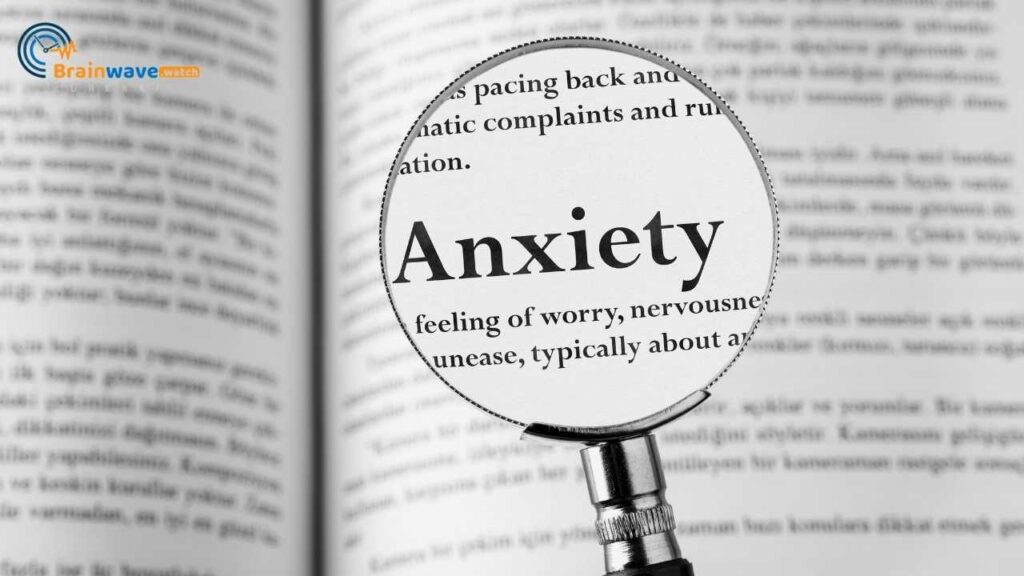Brain differences in autism can make perfectionist traits more intense and complex compared to non-autistic people. This heightened experience often connects to how autistic minds process information.
Perfectionism in Autism
Perfectionism means setting extremely high standards and feeling distressed when those standards aren’t met. In autism, this trait often links to precise thinking patterns and strong needs for order.
- Exact arrangements of objects
- Rigid routines
- Strong reactions to small mistakes
- Difficulty completing tasks due to high standards
Executive Function Impact
Executive functions control planning, organizing, and completing tasks. When combined with perfectionism, these brain processes can make starting or finishing activities extra challenging.
Common Misconceptions
Being detail-oriented differs from perfectionism. While many autistic people notice small details naturally, perfectionism involves emotional distress about getting things exactly right.
- Perfectionism isn’t just being “picky”
- It’s not limited to “high-functioning” individuals
- Detail focus can exist without perfectionism
| Characteristic | Neurotypical Expression | Autistic Expression |
|---|---|---|
| Fear of making mistakes | Fear may be moderated by contextual factors and risk assessment. | Fear may be significantly amplified, pervasive, and less influenced by contextual factors. |
| Need for order and symmetry | Desire for order and symmetry but can tolerate imperfection. | May experience significant distress or discomfort if things are not evenly arranged or precisely symmetrical. |
| Rule following | Comfortable bending rules if situation demands. | Strict adherence to established rules and routines, even when inconvenient or unnecessary. |
| Attention to detail | Able to balance detail awareness with broader perspective. | Exceptionally high attention to detail, often at the expense of missing the bigger picture. |
| Completionist tendencies | Okay with leaving tasks incomplete if necessary. | Strong need to complete tasks perfectly before moving on; may fixate on minute details of an incomplete task. |
| Reacting to feedback | Usually able to effectively handle critical feedback with some emotional effect. | May struggle significantly with receiving feedback, viewing it as personal criticism or failure. |
| Setting standards | Tend to set reasonable and achievable standards. | Frequently set unreasonably high and often unachievable standards. |
| Intrinsic vs. Extrinsic motivation | Motivation often driven by a mix of personal satisfaction and external reward. | Motivation primarily driven by intrinsic need for order, completeness, and perfection. |
How Autism and Perfectionism Connect
The Brain’s Role
The autistic brain processes information differently than neurotypical brains. This difference affects how perfectionism shows up in autistic adults.
- Pattern recognition tends to be stronger in autistic brains
- Small details get noticed more often
- Changes in routines or expectations can feel very disruptive
Many autistic adults notice patterns and inconsistencies that others might miss. When something doesn’t match the expected pattern, it can feel very uncomfortable.
Sensory differences play a big part too. When senses pick up more information than usual, it can make people want things to be “just right” to feel comfortable.
Control and Predictability
The brain likes things it can predict. For autistic adults, this often means:
- Creating detailed routines
- Wanting to know exactly what to expect
- Getting stressed when things aren’t perfectly organized
Special Interests and Getting Things Right
Special interests are topics or activities that autistic people focus on intensely. This focus often connects with perfectionism in several ways:
- Wanting to learn every single detail about the interest
- Spending lots of time practicing skills related to the interest
- Feeling frustrated when knowledge or skills aren’t perfect
This drive for complete understanding can make special interests both rewarding and challenging. It’s common to want to know everything about a topic before moving on to something new.
These patterns show how autism and perfectionism often work together. The same brain features that help autistic people notice details and patterns can also make it hard to accept things that aren’t perfect.
Common Challenges and Manifestations
Task Completion Issues
Perfectionism in autistic adults often creates specific patterns that affect daily functioning. These patterns can be recognized and understood.
Analysis Paralysis
- Getting stuck comparing options endlessly
- Overthinking small details
- Difficulty making final decisions
Task Initiation
- Waiting for the “perfect” time to start
- Needing exact conditions before beginning
- Spending too much time planning instead of doing
Time Management Struggles
- Losing track of time while perfecting details
- Missing deadlines due to revision cycles
- Difficulty estimating task duration
Social Impacts
Perfectionism affects social interactions in several ways:
Social Mistake Concerns
- Replaying past conversations repeatedly
- Avoiding social situations due to fear of errors
- Excessive preparation for casual interactions
Masking Behaviors
- Trying to match others’ social styles exactly
- Practicing conversations beforehand
- Mental exhaustion from constant self-monitoring
Communication Patterns
- Hesitation to speak without perfect phrasing
- Over-explaining to avoid misunderstandings
- Difficulty with spontaneous conversations
Work-Related Challenges
Professional settings present unique perfectionism challenges:
Project Management
- Missing deadlines due to endless revisions
- Spending extra hours refining minor details
- Difficulty considering work “complete enough”
Task Delegation
- Reluctance to share responsibilities
- Redoing others’ work to meet personal standards
- Limited trust in team members’ methods
Professional Burnout
- Mental exhaustion from maintaining perfect standards
- Physical stress from extended work hours
- Reduced job satisfaction despite high performance
Impact on Daily Life and Relationships
Personal Well-being
Perfectionism in autistic adults often affects multiple areas of daily functioning. High standards and rigid thinking patterns can lead to increased stress responses.
Anxiety and Stress Patterns
- Constant self-monitoring and error checking
- Physical tension from maintaining exact standards
- Mental exhaustion from repeated task revisions
Sleep Patterns
Sleep disruption commonly occurs due to perfectionist thinking. Many autistic adults report difficulty winding down when tasks feel incomplete or imperfect.
- Racing thoughts about incomplete tasks
- Difficulty transitioning to sleep due to mental reviewing
- Morning fatigue from disrupted sleep cycles
Executive Function Impact
Executive function abilities can become strained when perfectionist standards are applied to every task.
- Decision paralysis from weighing too many options
- Task initiation delays due to planning complexity
- Mental fatigue from constant detail focus
Professional Impact
Work environments present unique challenges when perfectionism meets deadlines and team dynamics.
- Extended task completion times
- Difficulty delegating responsibilities
- Stress during performance reviews
Workplace Relationships
Team interactions can become strained when perfectionist standards clash with typical workplace expectations.
- Communication barriers with colleagues
- Frustration with different work styles
- Challenges accepting feedback
Relationship Dynamics
Personal relationships often feel the effects of perfectionist tendencies.
Partner Interactions
- High expectations for relationship precision
- Difficulty with spontaneous activities
- Stress around shared responsibilities
Family Relations
- Tension around different standards
- Challenges with flexible plans
- Communication mismatches
Friendship Maintenance
Social connections require extra attention when perfectionist traits are present.
- Hesitation in casual social situations
- Limited spontaneous interactions
- Social energy depletion from masking
Recognizing Unhealthy Perfectionist Patterns
Warning Signs
Perfectionism often shows up in specific behaviors and thought patterns that can be noticed and tracked. Understanding these signs makes it easier to spot when perfectionist tendencies are becoming problematic.
Procrastination Due to Fear of Imperfection
- Putting off tasks until conditions feel “just right”
- Getting stuck in planning stages
- Spending too much time on small details
- Avoiding starting projects due to fear of mistakes
Excessive Self-Criticism
- Focusing only on flaws in completed work
- Setting standards that are impossible to meet
- Comparing work to idealized versions
- Dismissing positive feedback
Difficulty with Flexibility
- Getting upset when routines change
- Struggling to adapt when things don’t go as planned
- Finding it hard to accept alternative solutions
- Becoming stressed by unexpected changes
Self-Assessment Tools
Daily Mood Tracking
Recording daily emotions and stress levels can reveal patterns in perfectionist behaviors. Simple rating scales from 1-10 for anxiety, frustration, and satisfaction levels can be useful indicators.
Perfectionism Scale Adaptations
Standard perfectionism scales can be modified to better suit autistic adults by:
- Using clear, concrete language
- Breaking complex questions into smaller parts
- Including sensory and routine-based examples
- Focusing on specific situations rather than abstract concepts
Behavioral Pattern Recognition
Keeping track of specific behaviors can help identify perfectionist patterns. This might include noting:
- Time spent on tasks compared to their importance
- Number of times work is checked or redone
- Instances of avoiding tasks due to fear of mistakes
- Physical stress responses to imperfection
Practical Strategies for Managing Perfectionism
Cognitive Techniques
Black-and-white thinking can make perfectionism worse. Instead of seeing things as all good or all bad, it helps to notice the middle ground.
- Rate tasks on a scale of 1-10 instead of perfect/failure
- Look for partial successes in outcomes
- Notice when “good enough” meets the actual needs
Setting Realistic Standards
Realistic standards match the situation’s true requirements rather than an idealized version.
- Ask “What’s the real minimum needed here?”
- Compare standards to what others consider acceptable
- Match effort level to task importance
Acceptance-Based Approaches
Acceptance helps reduce perfectionist stress without giving up high standards completely.
- Notice perfectionist thoughts without acting on them
- Practice self-compassion when mistakes happen
- Focus on values instead of perfection
Behavioral Strategies
Breaking large tasks into smaller steps makes them less overwhelming.
- Split projects into 15-30 minute chunks
- Start with the easiest part first
- Take breaks between components
Time Management
Setting time limits prevents endless revisions and helps maintain balance.
- Use timers for specific tasks
- Set firm deadlines for completion
- Schedule regular stopping points
Flexible Routines
Routines provide structure while allowing room for adjustment.
- Build in buffer time between tasks
- Have backup plans for common issues
- Allow for schedule changes without stress
Environmental Modifications
A well-organized workspace reduces perfectionist triggers.
- Keep only essential items visible
- Use clear labeling systems
- Maintain designated spaces for tasks
Technology Tools
- Task management apps with adjustable deadlines
- Time tracking software
- Digital organization tools
Sensory Setup
The right sensory environment supports focus without triggering perfectionist responses.
- Adjust lighting to comfortable levels
- Use noise-canceling options if needed
- Choose comfortable seating and work positions
Building a Healthier Relationship with Standards
Setting Realistic Goals
The SMART goal framework can be modified to better suit autistic adults dealing with perfectionism. The standard elements – Specific, Measurable, Achievable, Relevant, and Time-bound – remain useful but benefit from some autism-specific considerations.
SMART Goals for Autistic Adults
- Specific: Break tasks into clear, concrete steps
- Measurable: Use exact numbers or checkboxes instead of abstract metrics
- Achievable: Start with smaller goals to build confidence
- Relevant: Focus on personal values, not external expectations
- Time-bound: Set flexible timeframes with buffer periods
Progress Tracking Methods
- Digital habit trackers
- Visual charts or graphs
- Simple checkboxes
- Notes in a dedicated journal
- Phone app reminders
Small wins matter. Recording minor achievements helps build momentum and creates a record of progress. This can include finishing daily tasks, meeting small deadlines, or handling unexpected changes.
Developing Self-Compassion
Mindfulness practices can help reduce perfectionist thoughts. Simple techniques like breathing exercises or body scans can bring attention back to the present moment when perfectionist thinking becomes overwhelming.
Self-Talk Modification Strategies
- Notice negative self-talk patterns
- Write down perfectionist thoughts
- Replace absolute statements with balanced ones
- Practice neutral observations instead of judgments
Recovery After Setbacks
- Take brief breaks when needed
- Return to basic self-care routines
- Review previous successes
- Adjust goals if necessary
- Connect with supportive people
When setbacks occur, returning to established routines can provide stability. This might include regular meal times, sleep schedules, or familiar activities that bring comfort.
Seeking Support and Building Resources
Professional Support Options
Finding the right professional support can make a significant difference in managing perfectionism. Mental health professionals who understand autism can provide valuable guidance and strategies.
Autism-Informed Therapy
- Look for therapists with documented experience working with autistic adults
- Consider specialists in Cognitive Behavioral Therapy (CBT) or Acceptance and Commitment Therapy (ACT)
- Many now offer virtual sessions for increased comfort and accessibility
Occupational Therapy
Occupational therapists can help develop practical strategies for:
- Time management and organization
- Breaking tasks into manageable steps
- Creating sustainable daily routines
- Managing sensory needs in different environments
Support Groups and Communities
- Online forums and discussion groups
- Local autism support organizations
- Virtual meetup groups
- Social media communities focused on autism and perfectionism
Self-Advocacy Skills
Communication Strategies
Clear communication helps others understand specific needs and challenges related to perfectionism.
- Write down main points before important conversations
- Use specific examples to explain challenges
- Share written information when verbal communication feels difficult
Workplace Support
Many workplaces can provide accommodations to help manage perfectionism-related challenges:
- Written instructions for tasks
- Regular check-ins with supervisors
- Quiet workspace options
- Flexible deadlines when possible
- Clear expectations and feedback systems
Building Support Networks
- Connect with understanding family members and friends
- Join professional networks related to your field
- Find mentors who can provide guidance
- Create relationships with colleagues who share similar experiences
Supporting Someone with Perfectionism and Autism
Understanding and Validation
Supporting someone with perfectionism and autism starts with understanding their experience. The combination of these traits can make daily tasks more challenging.
Active Listening Approaches
- Give full attention when they speak about their concerns
- Wait until they finish before responding
- Reflect back what was heard to confirm understanding
- Ask open-ended questions to learn more
Helpful vs Unhelpful Responses
Some responses can make perfectionism worse. These approaches work better:
- Instead of “Don’t worry about it,” try “I hear how important this is to you”
- Instead of “Just let it go,” try “What would make this feel more manageable?”
- Instead of rushing to fix things, ask “How can I help?”
Recognizing Progress
Focus on the work and effort put in, not just the end result. Notice and mention small improvements and attempts to try new approaches.
Practical Support Methods
Working Together on Solutions
- Break big tasks into smaller steps
- Help set realistic timelines
- Discuss backup plans for different scenarios
- Create clear guidelines for what “done” means
Creating Supportive Spaces
The right environment can reduce perfectionist stress:
- Maintain organized spaces
- Reduce sensory distractions
- Keep needed materials easily accessible
- Set up quiet zones for focus work
Setting and Respecting Limits
- Accept when they need space
- Ask before offering advice
- Respect their preferred routines
- Let them set the pace for changes
- Honor their right to say no
Moving Toward Self-Acceptance
Embracing Neurodiversity
Neurodiversity represents the natural variation in how human brains work. For autistic adults dealing with perfectionism, recognizing this variation can reduce self-criticism.
Recognizing Strengths
- Attention to detail
- Strong focus on specific topics
- Pattern recognition abilities
- Logical thinking processes
- Memory for facts and information
Special Interests as Assets
Special interests can become valuable tools for personal and professional growth. These focused areas of expertise often lead to:
- Career opportunities
- Problem-solving skills
- Social connections with others who share interests
- Stress relief during difficult times
Building Confidence
Confidence grows through small steps and practical achievements. Some effective methods include:
- Recording daily accomplishments
- Setting realistic goals
- Breaking tasks into smaller parts
- Celebrating small wins
Long-term Growth
Progress Measurement Tools
- Daily mood trackers
- Task completion logs
- Weekly reflection journals
- Progress photos of projects
- Skill development charts
Maintaining Momentum
Consistent progress comes from establishing regular routines and systems:
- Morning and evening routines
- Regular check-ins with support people
- Scheduled rest periods
- Clear boundaries
Creating Sustainable Change
Long-lasting changes happen through gradual adjustments rather than dramatic shifts. Key components include:
- Regular sleep schedules
- Balanced nutrition
- Consistent exercise routines
- Time management systems
- Support network maintenance







